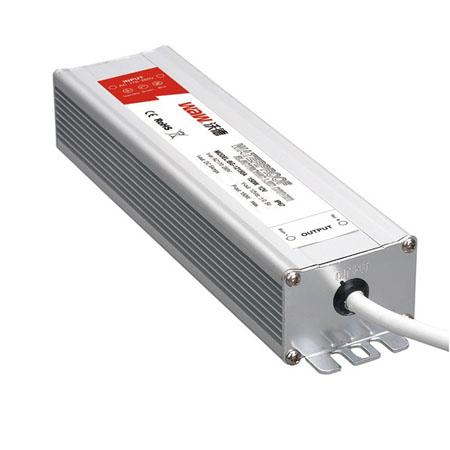
Wenzhou wode electrical co.,LTD
Tel: +86 577 62602806Phone: 86-18106781616E-mail: wode@wodeps.com

Tel: +86 577 62602806Phone: 86-18106781616E-mail: wode@wodeps.com

Date:2021.04.25 Views:3548
LED drivers act not only as a current management system but also as a protection buffer.
LED drivers are used for three main purposes.
Most homes use 120-277V AC power, but LEDs rely on low voltage DC power to operate. Therefore, the driver converts the higher voltage AC current into a lower voltage DC current to match the voltage at which the LED lamp needs to operate.
The input voltage to the driver must be the same as the voltage required by the driver. Otherwise, voltage variations can cause flickering or blinking.
A common method of controlling the light output of LEDs is by pulse width modulation. This may cause flicker when the LED bulb is dimmed, especially at the low end of the light output.

Most LEDs require a driver, a few are designed to run on AC current. Although LED bulbs that you screw into fixtures may not look like they do, they actually have internal drivers, just as screw-in CFLs have built-in ballasts. Most domestic LEDs that are direct replacements for incandescent, halogen and CFL bulbs with E26 / E27 or GU10 / GU24 bases have internal drivers.
This is the strip light that people trip over. LED lighting also require a driver, but you can buy the strips separately from the driver and one driver can power multiple LED strips!
A: Firstly, you must check if the driver is serviceable, which means it can be replaced. If it is a bulb, the chances of it being serviceable are nil. They are hard-wired into the bulb. For larger lamps, this is a good chance. You need to access the driver assembly and gather some important specifications. It is also a good idea to test the input and output of the driver to make sure it is just a driver. First try the driver model and see if you can find it. If not, you will need an equivalent. What is the rated input power? What is the voltage rating? What is the output? Constant current or constant voltage? Is there 0-10v dimming on the board? You will then need to find a similar sized driver that meets the input power, voltage, output current etc. If you find a match, then you can replace it all. The good news is that it is usually easier to swap them out than to find them.
Here's another tip: if your LED lights are getting dim, it might be the driver that's the problem -- not the LED! Drivers operate at a high internal temperature, which is why LED life can be reduced if the bulb is in an enclosed fixture or used in a hot garage, for instance. The driver may fail before the solid state junction of the LED chip fails. This is also why LEDs are much better in cold temperatures than CFLs. They illuminate instantly (technically faster than incandescent) while comparable CFL bulbs may require a dim light, warm-up period before getting to full light output.
Finishing Up Those Strip LightsSo now, with your collection of LED light strips and no driver, what do you do? The only solution is to pick up a driver for your lights.